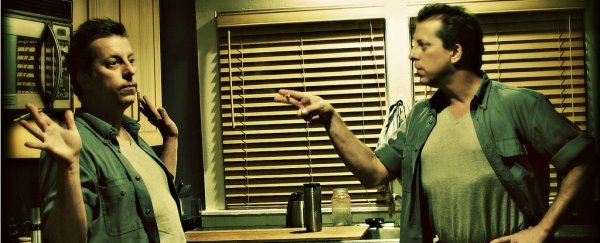Most of us have, at some point in time, been told we have a doppelgänger - someone out there who looks just like us. But what are the chances, scientifically speaking, of that happening?
According to the research, having an exact doppelgänger is less likely than you might think. A 2015 study by researchers in Australia crunched the numbers and investigated the probability of two people matching up exactly in eight key facial features.
They found that there's about a one in 135 chance that a pair of complete doppelgängers exist somewhere in the world. But the likelihood of someone walking around looking identical to you, specifically, in all eight facial features is only one in 1 trillion. Creepy, but not very likely.
To come to this conclusion, biologist Teghan Lucas, from the University of Adelaide in Australia, and her team examined 4,000 different faces from the US Anthropometric Survey (ANSUR) database – a record of anthropometric data created by the US Army to keep track of the bodily measurements of soldiers.
She measured and compared them across eight distinct facial features - although didn't disclose which features these were.
The team concluded that the chances of someone looking exactly like someone else in all eight features is about one in 1 trillion.
Which means that there's definitely a mathematical chance for two doppelgängers to exist, but it's highly unlikely. According to the BBC's Zaria Gorvett, doppelgängers can be explained by the infinite monkey problem, which states that if you sit a monkey in a room with a typewriter for an infinite amount of time it will – at some point – pen the works of Shakespeare. As she reports:
"It's a mathematical certainty, but reversing the problem reveals just how staggeringly long the monkey would have to toil. Ignoring grammar, the monkey has a one in 26 chance of correctly typing the first letter of Macbeth. So far, so good. But already by the second letter the chance has shrunk to one in 676 (26 x 26) and by the end of the fourth line (22 letters) it's one in 13 quintillion. When you multiply probabilities together, the chances of something actually happening disappear very, very quickly."
The best way to consider the staggering improbability of finding a true doppelgänger is to imagine the amount of genetic variables that would have line up just right for one to exist.
Plus, as Eoin O'Carroll points out for The Christian Science Monitor, a series of improbable environmental factors would also have to line up because nutrition and living conditions can vastly impact a way a person grows during maturity.
So why do people keep telling you they saw someone that looks "just like you" if that's so statistically unlikely?
The issue here is that people can perceive faces differently, meaning that just because a person's face isn't exactly – mathematically speaking – the same, people can perceive them as the same because they gauge the sum of the face instead of each individual part, which explains why many of us think identical twins look exactly alike when – in reality – there are usually many differences.
This means that – even though a person might not be a true doppelgänger – we might think they are because we cannot calculate the minuscule measurements of their facial features like the team did in the study.
In other words, it's quite likely to have a doppelgänger out there that your friends think looks exactly the same as you, but if you were to analyse their features scientifically, it's unlikely they'd be a true match.
While the findings are just plain cool to think about, the team also says that they suggest that facial recognition might be as good as fingerprinting or DNA in catching wanted criminals.
"The use of video surveillance systems for security purposes is increasing and as a result, there are more and more instances of criminals leaving their 'faces' at a scene of a crime," said Lucas. "At the same time, criminals are getting smarter and are avoiding leaving DNA or fingerprint traces at a crime scene."
The team was able to show that by using facial measurements of the eight key features, they were able to accurately match a face captured on video surveillance footage and match it to a suspect – which is presumably why they didn't disclose the features they measured, in order to stop criminals outsmarting the system.
"This study has provided overwhelming evidence that facial anthropometric measurements are an effective means for identifying a perpetrator when video or photographic surveillance has captured a crime," she added.
So the good news in all of this is that the chance of a doppelgänger running around and committing crimes with your face is incredibly low – even if your friends might think you look the same.
The team's findings were published in journal Forensic Science International.
